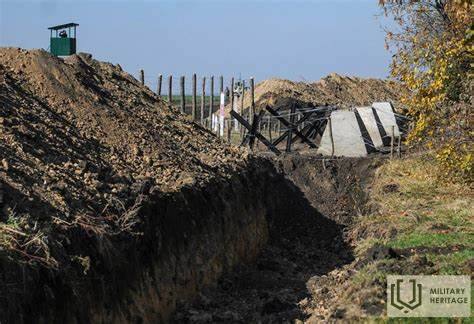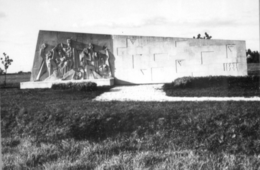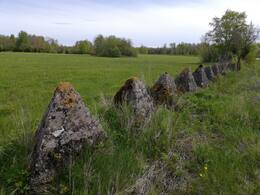Prieštankiniai įtvirtinimai
I WW1, II Antrasis pasaulinis karas, IV Sovietų okupacija
Įtvirtinimas, skirtas apsaugoti nuo tankų ir kitos motorizuotos technikos atakų.
Įtvirtinimai buvo betoninės arba metalinės konstrukcijos, spygliuotos vielos tvoros, prieštankiniai grioviai arba įvairių tipų žemės pylimai.
Susijusios vietos
Jalaka prieštankinė linija Tartu
Jalakos linija (pavadinta Tartu vykdomojo komiteto pirmininko Kristjano Jalako vardu) buvo prieštankinė apkasa, iškasta palei Rygos kelią netoli Rani kaimo, už keturių kilometrų nuo Tartu 1941 m. vasarą kaip atsakomoji priemonė prieš vokiečių puolimą.
Dalis linijos yra Lemmatsi kaime, kitame kaime už Tartu ribų, prie E264 kelio Valgos kryptimi. Kita dalis buvo nutiesta dešiniajame Emajegio upės krante, besitęsiančiame nuo Käreverės iki Pragos.
Sovietų režimas verčia Tartu gyventojus nuo 16 iki 55 metų amžiaus statyti Jalakos linijos įtvirtinimus. Vokietijos režimas 1941 ir 1942 metais šiuose apkasuose vykdė mirties bausmę tiems, kurie buvo nuteisti mirties bausme Tartu koncentracijos stovykloje. Sovietmečiu teroro aukoms atminti buvo pastatytas Elmaro Rebase ir Väino Tamm suprojektuotas paminklas.
Lepės-Kaimri prieštankinė linija
1941 m. rugsėjo 16 d. sovietų pajėgos pradėjo Lõpe-Kaimri prieštankinės linijos statybą, siekdamos sustabdyti vokiečių puolimą. Ji driekiasi iš vakarų į rytus pietinėje Sõrve pusiasalio sąsmaukos dalyje, kurios plotis šiuo metu yra vos 3,2 km. Prieštankinė linija, kurią sudaro dvi betoninių piramidžių eilės, besitęsiančios 900 metrų nuo Lõu įlankos iki Teesu kaimo, yra geros būklės. Ją sudaro dvi 0,8 metro aukščio piramidžių eilės, išdėstytos vieno metro atstumu viena nuo kitos. Kai kuriose gana gerai išsilaikiusios prieštankinės linijos dalyse yra tarpų, rodančių vietas, kuriose priešas prasiveržė. Ši vieta yra lengvai pasiekiama ir aiškiai matoma nuo kelio, einančio vakarine sąsmauko puse. Linijoje 1969 m. atidengtas paminklas, vaizduojantis aukštą betoninę piramidę su užrašu: „Lõpe-Kaimri prieštankinė linija, pastatyta 1941 m.“.
Susijusi istorija
Priverstinis darbas Jalakos linijoje
Kaip 1941 metų vasarą Jalakos linijoje buvo iškasti prieštankiniai apkasai, siekiant apsisaugoti nuo vokiečių puolimo.









